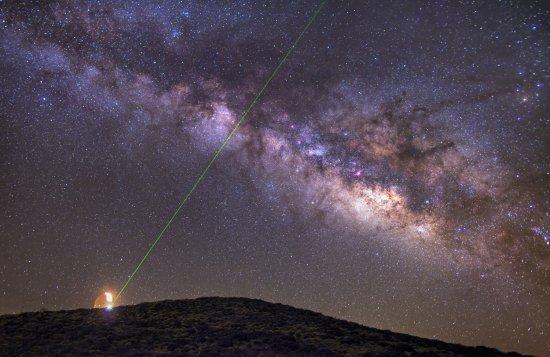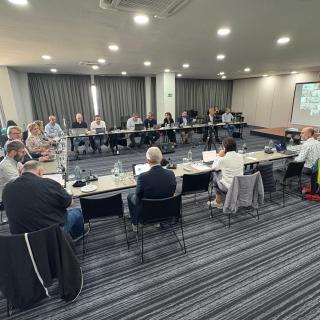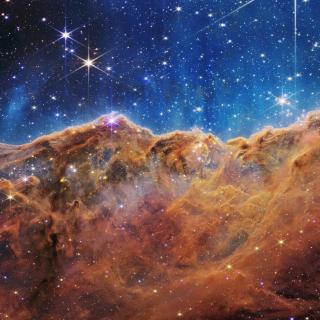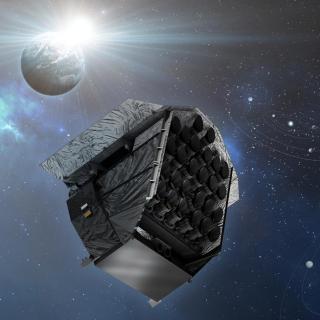For three days, the Dutch astronomer, Tim de Zeeuw, Director General of the European Southern Observatory (ESO) has been visiting the headquarters of the Instituto de Astrofísica de Canarias (IAC) in La Laguna, as well as the Teide Observatory in Tenerife, and the Roque de los Muchachos Observatory, in La Palma. During the course of the visit an agreement was signed between the two institutions to perform experiments at the Teide Observatory related to forefront technology in the field of adaptive optics, a technique which will shortly be used at the Gran Telescopio Canarias (GTC) and will be essential in the future 39 m telescope (E-ELT) which ESO will build in Chile.
On the final day of his stay, Tim de Zeeuw gave a lecture to the staff of the IAC with the title "ESO: Present and Future", and held various meetings with IAC researchers.
Laser Guide Stars
One astronomers' worst enemies is atmospheric turbulence which makes astronomical objects appear blurry when observed from telescopes on the ground. To compensate for this effect the technique of adaptive optics can be applied. This uses computer controlled deformable mirrors which can be re-shaped hundreds of times per second to correct, in real time, the distortion produced by the atmosphere. The computer is fed by signals from bright stars close in the sky to the object under study, to make these rapid corrections possible. Unfortunately, there are very few stars bright enough to satisfy the requirements of adaptive optics. This problem is solved using artifical references which are termed "Laser Guide Stars".
The "guide star" is produced by shooting a powerful laser into the sky. The beam creates a bright spot, because it excites the sodium atoms present in the mesosphere, which is a layer in the atmosphere 90 km above the ground. The light which is reflected back from this reference spot can be used in the adaptive optics to yield images of astronomical objects as sharp as if the telescope were in space.
The collaboration between the IAC and ESO is designed principally to optimize a system of Laser Guide Stars developed within ESO. The lessons learned, together with the experience acquired by the IAC during more than ten years of work in this field, will be used when this technology is incorporated into the adaptive optics of the GTC. Specifically the project, which will be operative for 27 months, will focus on the determination of the best conditions for generating the largest reflected light flux from these "artificial stars", with special attention being paid to the influence of the Earth's magnetic field on this flux.



